The Visitor Centre today is ... Galleria Campari and Camparino bar
- JULIE WHITE
- Aug 11
- 16 min read
Updated: Oct 10
Two locations in Milan connected by one iconic, bitter red spirit. Visiting the Galleria Campari and the brand's historic Camparino bar is a journey through Italian design, aperitivo culture, cocktail heritage and Red Passion.

Walk into the world of Campari, and you're stepping into something far bigger than a cocktail. It’s a story of bold colour, Italian craft, and cultural style that’s been unfolding for over 160 years. At Galleria Campari, the brand’s artistic and advertising past comes alive in a bright, playful form, while Camparino in Galleria, just steps from Milan’s cathedral, serves brand history in a glass.
First created in 1860, Campari has become Italy’s unmistakable red spirit, instantly recognisable in a Negroni or Americano. Its original recipe remains unchanged, but its legacy has grown into a global symbol of Italian elegance, creativity, and ritual.

Now, a gallery wasn't exactly on my husband's itinerary, on our jaunt to Italy's second city in search of this brand museum. Art just isn't his thing. He expected, as many do, that we would find ourselves on a more traditional distillery tour, seeing behind the scenes of production. Failing that, maybe a hands-on mixology workshop where we’d learn how to stir, shake, and sip with some flair.

However, what’s interesting about Galleria Campari is that it’s not a traditional brand museum. It feels more like a creative space than a commercial one, and that’s very much by design. Calling it a gallery changes the tone completely. Campari has always worked at the edge of art, film, and advertising, and the gallery reflects that creative spirit. It’s also a perfect fit for Milan, a city known for fashion, design and architecture. A gallery feels right at home here.

And, if a gallery isn't your thing, then the brand has its own legendary Camparino Bar in the stunning Galleria Vittorio Emanuele II, Italy's oldest active shopping arcade, one of the major landmarks of Milan. Drinking a Negroni, watching the world go by in the historic home of the brand, is simply perfection.
Campari is not just a drink; it’s a brand with art in its DNA.
The brand history
Gaspare Campari was born in 1828 in the town of Cassolnovo, in the Lombardy region of Italy, a mere 30 km southwest of Milan. The farmer's son moved to the nearby town of Novara, found work in bars, where he eventually became a liqueurist at the ripe old age of fourteen. It is here that he created the original recipe for what would become the iconic Campari aperitif.

He gave his concoction, made from over 60 herbs, spices, roots and fruits, the not so catchy brand name of Bitter all'uso d'Hollanda, (Dutch bitter), as it was based on a drink he knew from Holland. It is a recipe that is virtually identical today. With its vibrant red colour, back then achieved using carmine, a natural dye made from crushed cochineal insects, today it’s coloured with modern food-safe alternatives. We have no idea what possessed him to make his drink red, but it was a stroke of genius. The coloured spirit stood out from the rest, and sales soured. Thankfully, it quickly became better known as just Campari.

Gaspare remarried in 1862 and settled with his new wife, Letizia, in Milan, where he opened a bar and launched his bitter aperitif on the increasingly fashionable Milanese society. Milan at the time was a mix of old-world elegance and modern, industrial ambition. Italy had only just been unified (1861), and although Rome had become the new nation's capital, Milan saw itself as a northern powerhouse, where politics, craft and production were king. Railways linked Milan to the rest of Italy and Europe, fuelling commerce and migration.

In 1867, Gaspare opened Caffè Campari inside the newly built Galleria Vittorio Emanuele II, a grand covered arcade that linked the square in front of the cathedral to the opera house. The café quickly became one of the most fashionable spots in Milan, attracting wealthy locals, visitors, and creative minds alike. Artists, writers, and businessmen gathered here to enjoy cocktails or a light aperitif before dinner, helping to turn aperitivo into a true Milanese tradition.

When Gaspare died in 1882, Letizia took over the business, running both the distillery and the Caffè Campari while raising their five children. It was under her watch that the brand began to grow beyond the bar, with products sold more widely across Milan.
But it was their son, Davide, with his forward-thinking spirit, who led the brand into a new era with a bold plan to take it global.
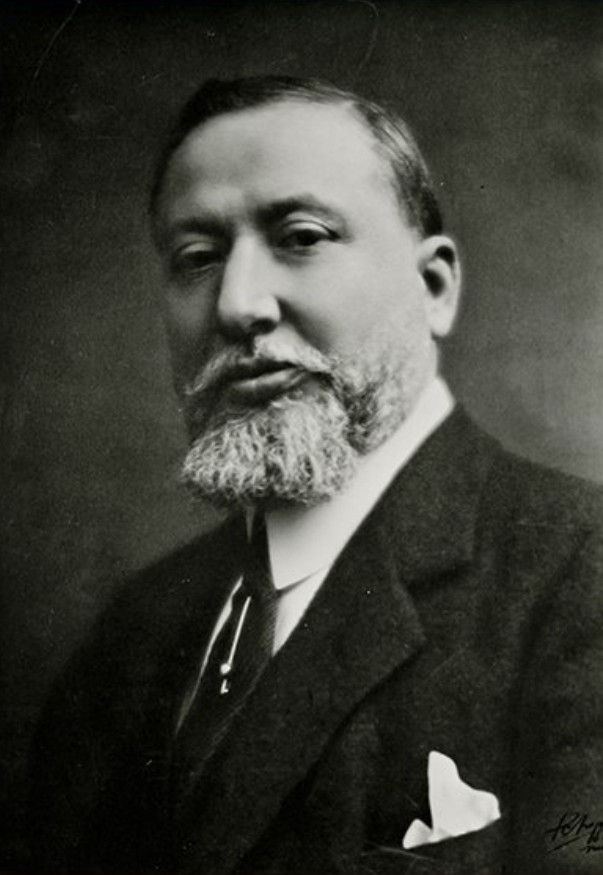
Milan at the turn of the new century was alive with new factories, offices, and apartment buildings reshaping the cityscape. The streets buzzed with electric trams, and the first cars were appearing alongside horse-drawn carriages. When Davide moved his family to a new mansion in the suburbs of Sesto San Giovanni in 1904, the factory relocated next door, adjacent to the railway that would transport his products across Europe. It was an area that became known as “the Manchester of Italy” and is still where the brand's headquarters reside.

Davide wasn’t only about business. He was a man who understood image, design and the power of culture. He paired sharp marketing with a strong focus on the arts, using design, film and illustration to bring the brand to life in a way few were doing at the time.

In 1915, he opened the Camparino bar in Galleria Vittorio Emanuele II, where it still operates today. During Prohibition, the popularity of the Negroni, a cocktail born in Florence, helped Campari's sales to soar. Made from equal parts Campari, gin, and sweet vermouth, the bold red bitter was now essential to one of the world’s most iconic cocktails. Davide also introduced the world’s first single-serve aperitif, Campari Soda, in 1932, in a unique conical bottle, a design that is still used today.

Following Davide's death in 1936, the family eventually lost overall ownership, though the brand is still known as Davide Campari, in recognition of his legacy. The brand reinforced its links with stars of the runway and film, photographers, artists and designers, through their various marketing campaigns, investing in innovation, new products, and sustainable production practices, keeping the brand modern while respecting its heritage. The 2025 ad featuring one of my favourite actors, the fabulous Mads Mikkelsen, highlights the care and attention to detail that a proper Negroni demands. I'm thirsty!
Campari Group owns over 50 brands, such as the ever-popular Aperol, Wild Turkey, Grand Marnier, Courvoisier, and Champagne Lallier. Campari's brands are marketed and distributed in over 190 markets around the world. Campari Group reported solid ongoing growth in Campari itself in 2024, especially in the US, supported by the Negroni Week marketing sponsorship campaign, which runs annually in late September, launched in 2013 by Imbibe magazine. Negroni Week goes beyond just promoting the brand; it's also a charitable initiative. Participating bars donate a share of their Negroni sales to local and global causes, allowing Campari to show it cares about more than just business.
Visiting the Galleria Campari: What to Expect
The Visitor Centre design
Galleria Campari opened in 2010 to mark Campari’s 150th anniversary.
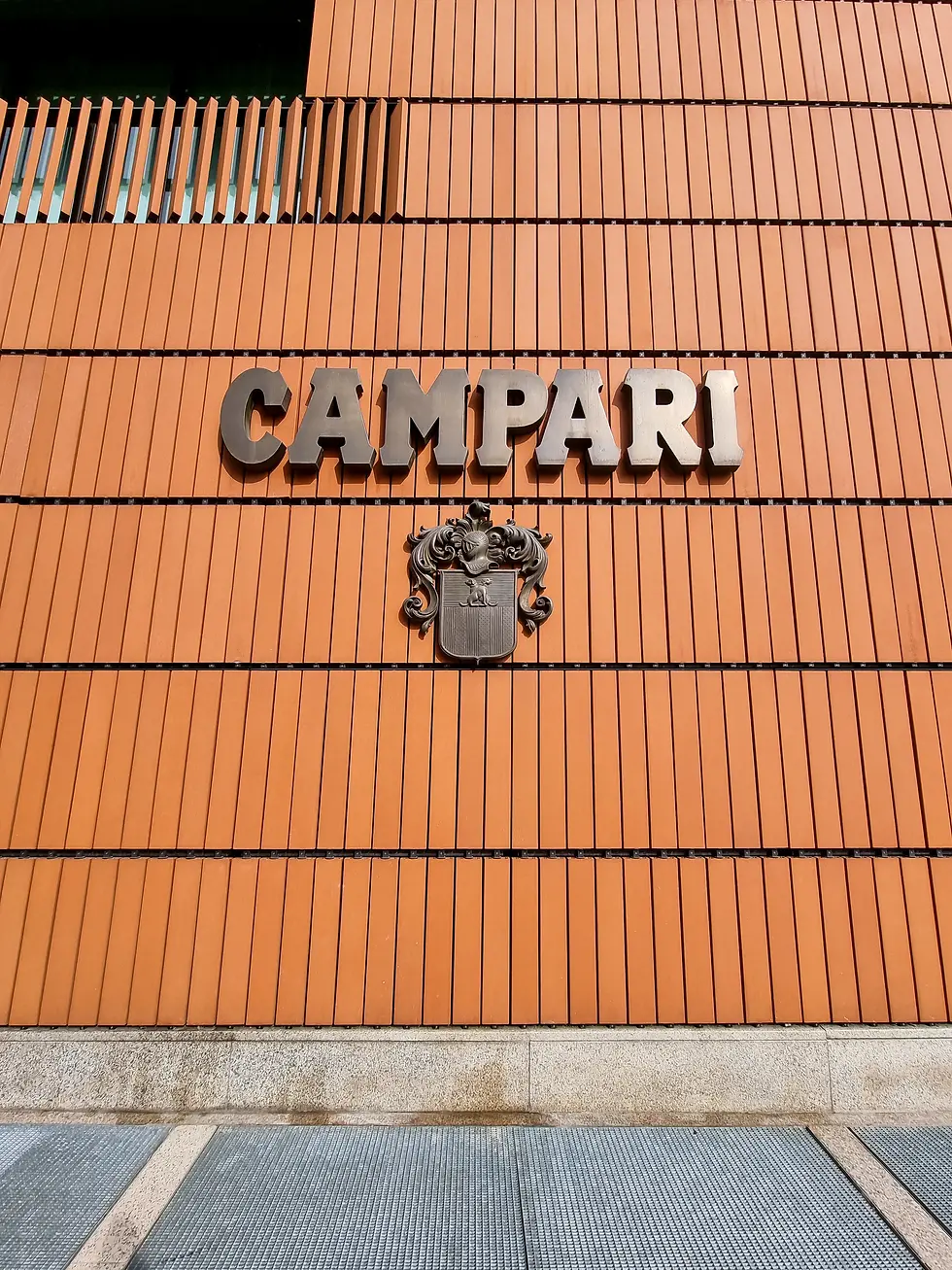
The building alone is quite the architectural gem. Renowned Swiss architect Mario Botta and Giancarlo Marzorati designed a modernist mixed-use building as the brand’s headquarters.

The Spazio Davide Campari site covers over 2,000 square metres and comprises a lobby, the Galleria Campari (the brand museum), the Campari Academy and the Villa Campari Restaurant, along with event spaces, housing and a park. The towers are named after four famous artists: Depero, Dudovich, Cappiello and Nespolo, who helped create Campari’s visual style.


What I appreciate most is that the architects repurposed and incorporated the original Campari factory, dating back to 1904, within their design. Large terracotta reliefs of iconic characters, created by the futurist artist Depero and drawn from the brand’s marketing past, have been added to the sides of the factory. Thank goodness for brands that treasure their archive, or details like this would not happen.

The factory was in use right up until 2005. Celebrating the brand’s history and preserving its original features saved the structure from the wrecking ball of urban regeneration. Built in the Liberty style, the Italian variant of Art Nouveau, it is the perfect location for a brand museum that looks to the future while respecting its past.
"This is one of the good things about a city — it speaks to us through the emotions and memories of its spaces. These spaces have a language of their own. They communicate and can stir deep feelings." (Mario Botta, Where Emotions Live: Happiness and the Places We Inhabit" -Einaudi Publishers.)

Galleria Campari is part museum, part design depository. Designers and art lovers can revel in the decades of poster design, cinematic advertising and collaborations with artists and filmmakers on show. It’s a celebration of the brand’s cultural side, not just its commercial success. I defy any designer not to come away inspired. Even the casual tourist can appreciate the interactive elements, with the digitised archive that accompanies the audio guide.
The gallery concept also gives Campari room to evolve. New exhibitions come in, talks and events take place, and the space shifts with each story the brand wants to tell. That flexibility suits a brand that’s always visually reinventing itself.
The self-guided tour
There is a guided tour on offer, in Italian! As my woeful language skills would have been severely tested, we plumped for the English audio guide, thankfully on our phones and not via clunky headsets. There are only two languages as an option, so international visitors might struggle. You need to pre-book to visit and should allow at least an hour to tour the galleries.
The first floor of the Gallery is dedicated to the evocative story of the brand’s history, following three themes: art, communication and production.

A flowing red fabric ribbon cleverly guides visitors through the exhibition space, creating a visual connection between the artworks and the history of the brand.

Original advertising posters from early 20th-century artists like Fortunato Depero and Leonetto Cappiello sit next to screens playing TV commercials and films directed by big names, including Federico Fellini and Paolo Sorrentino.
Bruno Munari's Graphic Declination of Campari Logotype from 1964 hangs on a wall and is also recreated as a mural in the entrance lobby.

An illuminated model of Depero's typographical design for a Campari pavilion for the 1933 international exposition in Milan sits next to his wooden puppets from 1928.

The collection of advertising is accompanied by information on the audio guide, which has additional images, and there are touch screens for even more educational opportunities.
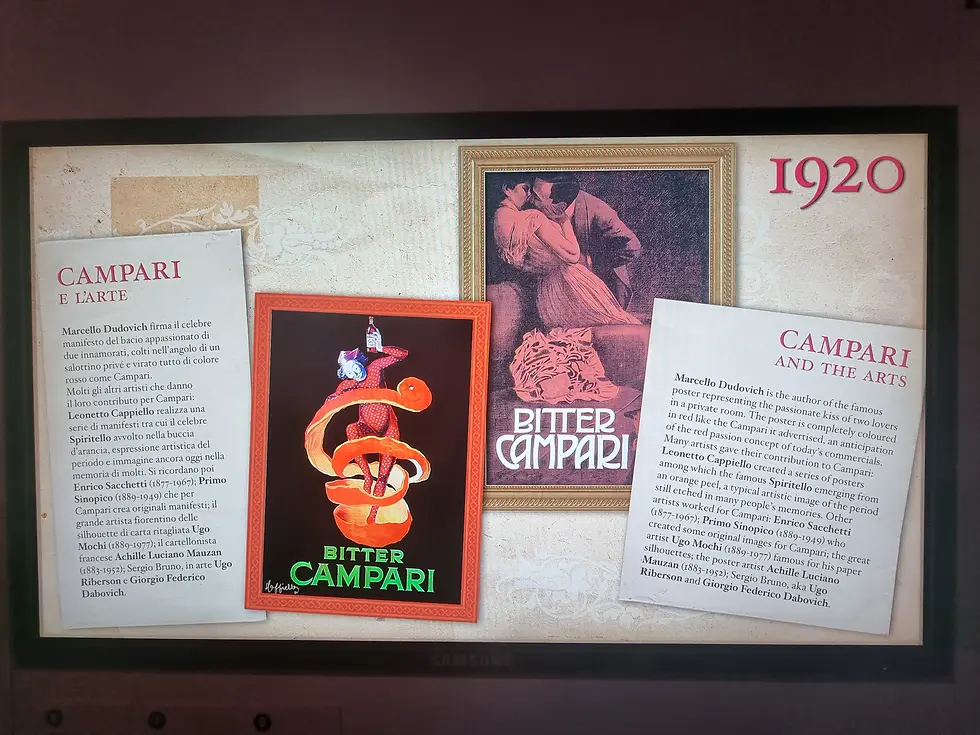

One wall is filled with Campari cut paper silhouettes from the 1920s by Ugo Mochi, the artist from Florence known as the “poet of the shadows”.


Ugo Mochi (1889–1977) gained international acclaim for his minimalist silhouettes and created over 200 striking images for Campari’s advertising campaigns.
The stunning artworks continue throughout the gallery space, a delight for graphic design fans.
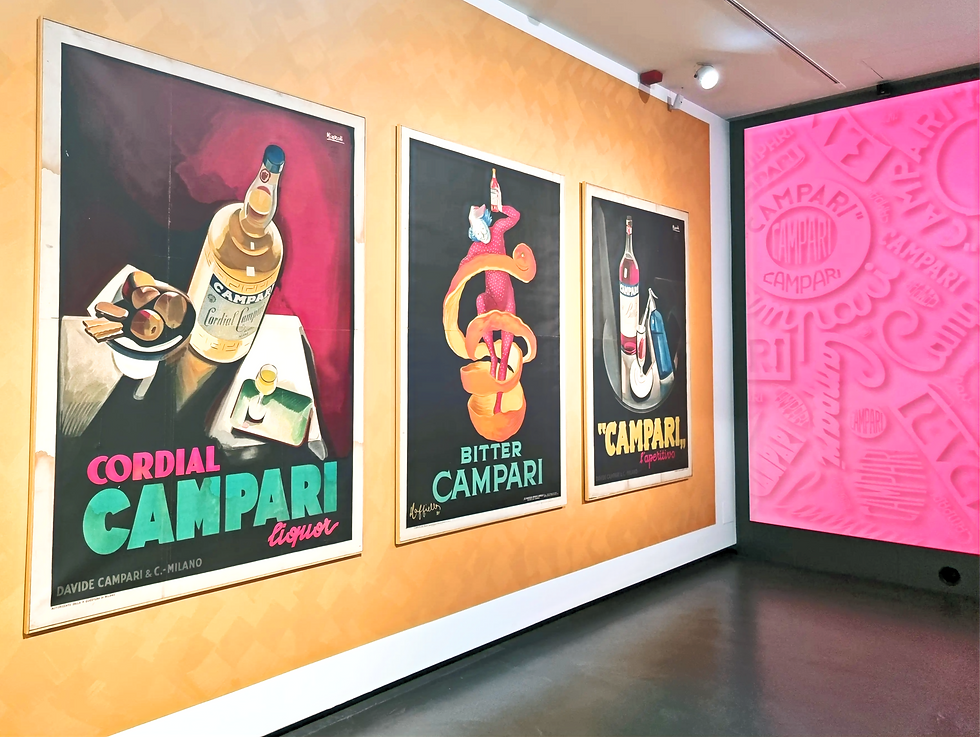

Marcello Dudovich (1878–1962) was one of the pioneers of Italian poster art, known for combining the graceful style of Art Nouveau with a fresh, modern touch. After relocating to Milan in the late 1890s, he quickly rose to prominence as a top illustrator and advertising designer. By the early 20th century, he had established a lasting collaboration with Campari, helping to shape the brand’s distinctive visual identity and his posters are so evocative of the time.
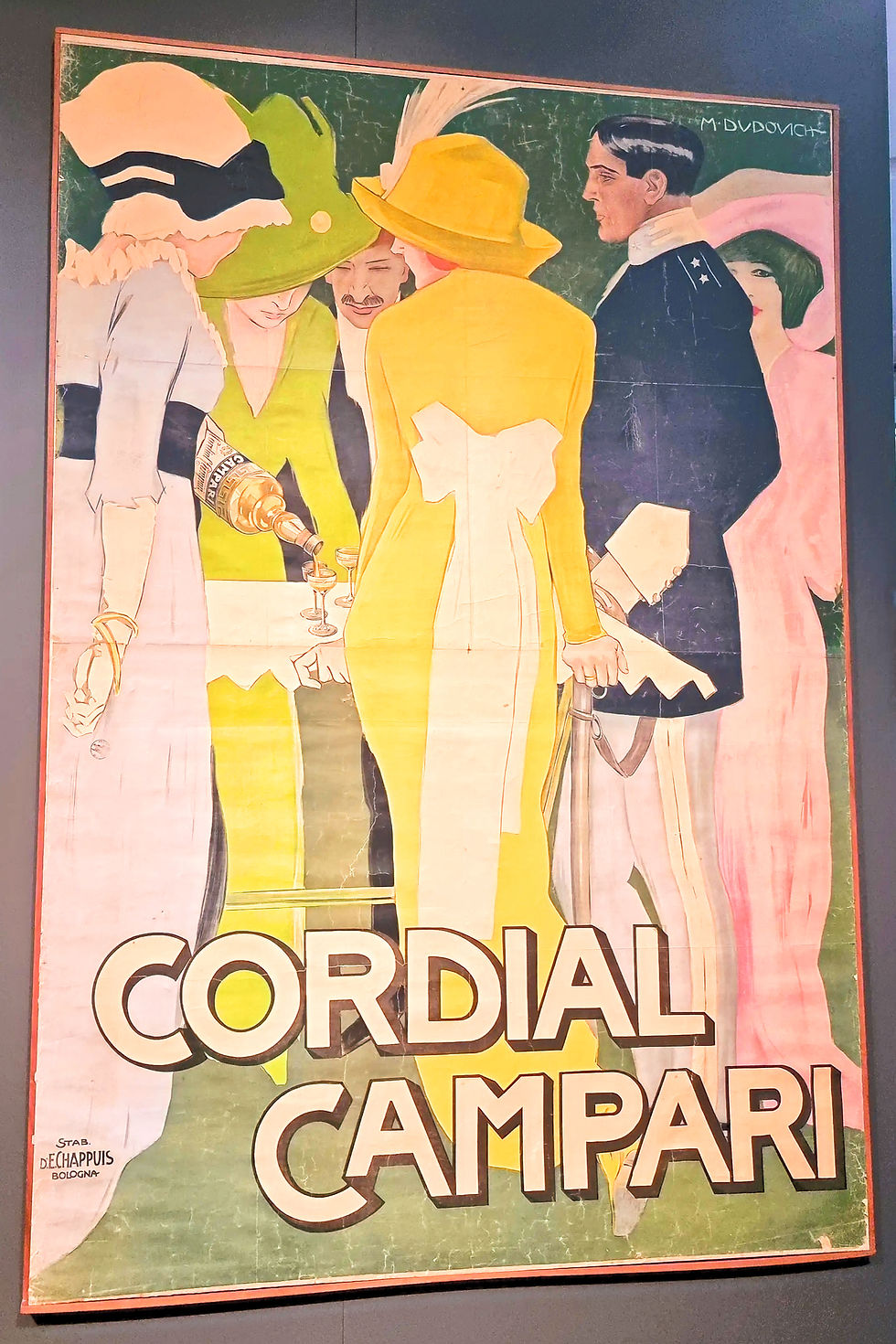
Art of Drinking
The second floor of the Galleria Campari is where things get fun, with a hefty dose of nostalgia thrown in for good measure. The gallery is called The Art of Drinking and, instead of following a timeline, visitors move through five creative rooms filled with vintage bar items such as cocktail shakers, glasses, menus, ashtrays, trays and bottles.
The first room welcomes you with more than 4,000 drops of Campari hanging from the ceiling.

Then comes the Bar Room, where you step into the daily world of a Campari barman, surrounded by tools and bar objects from the past.

The mechanical bartender, designer unknown, dates back to at least the fifties.

Campari Soda was the world’s first ready-to-drink aperitif, truly way ahead of its time when you consider how prevalent RTD cocktails are now.

Designed in 1932 by Campari favourite Fortunato Depero, the bottle is shaped like an upside-down goblet and has no label, with the name embossed right on the glass. With its bright red colour and unique design, Campari Soda became an icon. The bottles are even used in the gallery as unique lighting.

What I hadn't appreciated was that the bottles were designed to be uniquely stacked into Campari crates, so that more bottles could be safely transported, making it a perfect mix of function and creativity.

My inner tram enthusiast lit up when I spotted a pair of 1930s Campari-branded tram hand grips. In the 1920s and 1930s, Campari cleverly used Milan’s iconic tram system as a moving billboard, turning everyday commutes into vibrant brand experiences. Just imagine the fun commuters must have had, gripping them as the tram rattled over Milan’s cobbled streets, with the inner cylinder rotating to reveal different product names and images. I couldn’t resist having a go myself, and it was a playful, tactile glimpse into the past. I only wish there were more hands-on objects like these to explore.

Using trams for marketing isn't just a historic activity for the brand. During Milan Design Week (Salone del Mobile) 2025, Campari transformed a historic Milan tram into a roaming aperitivo bar, complete with an artist in residence, DJ sets, and drinks, all served aboard a bold, red carriage.
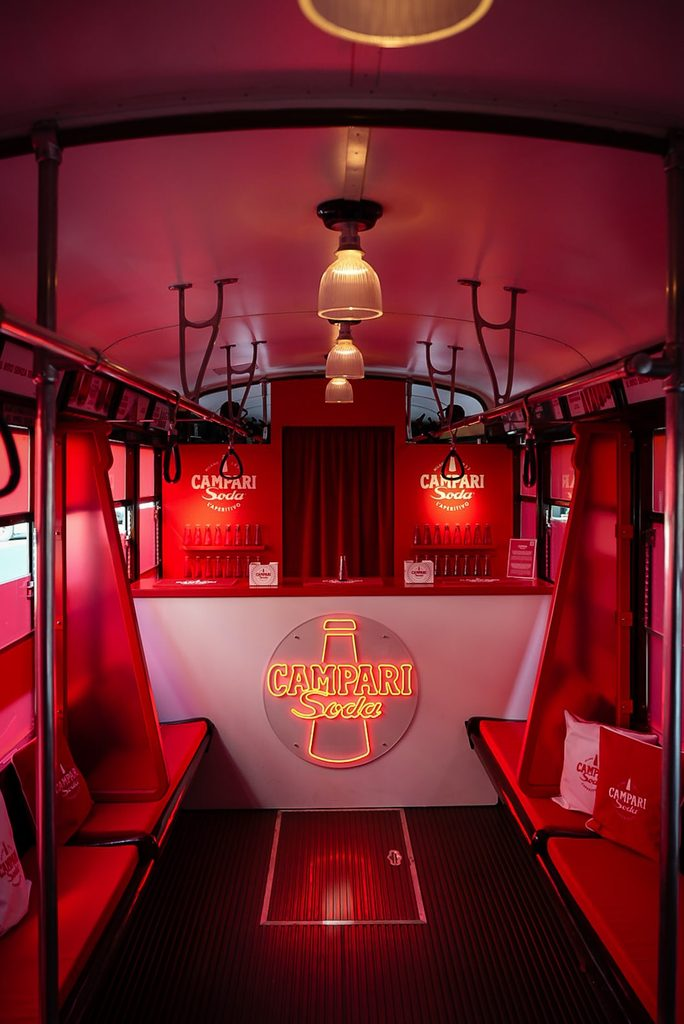
The brand museum exhibition packs so many artefacts into a small space.

You can even see old Campari clocks from the 1960s and 70s.

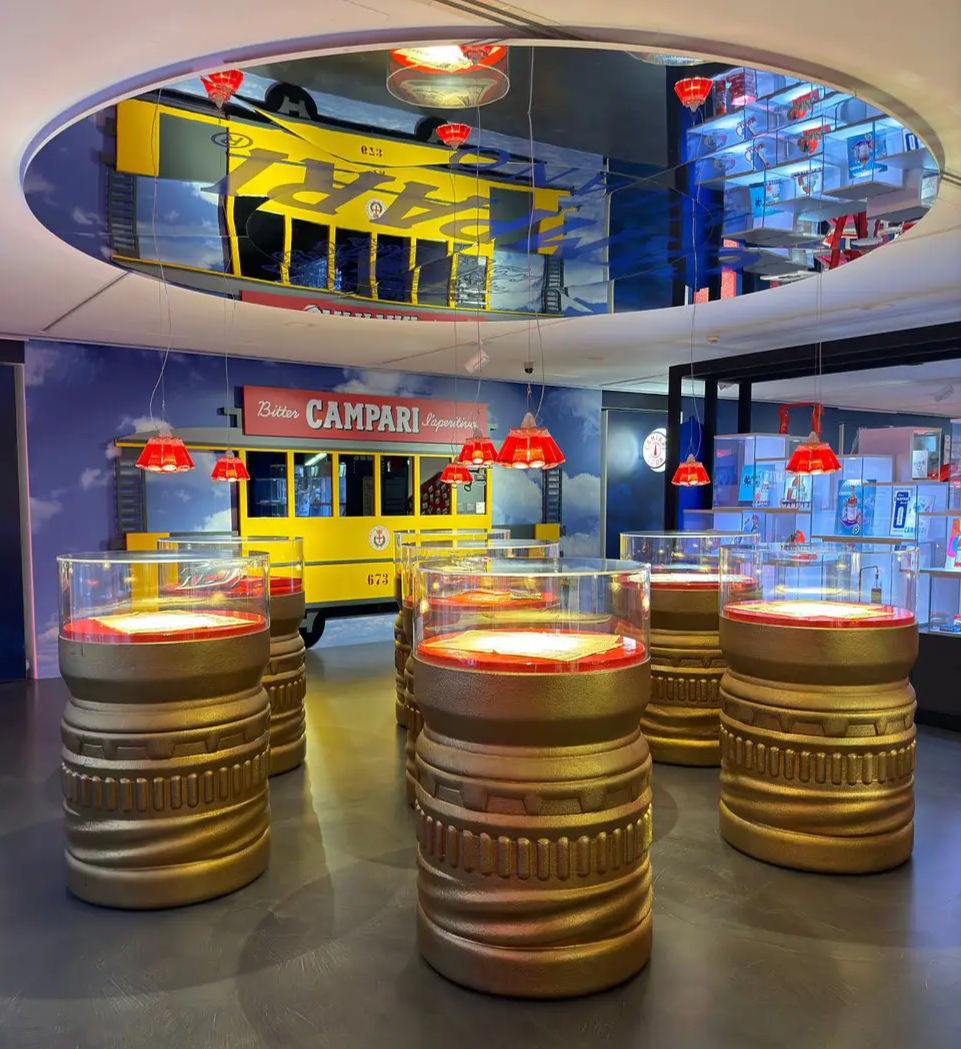

Finally, the Design Room features video interviews with designers who helped shape Campari’s style over the years. The visit ends with a look at 60 different bottles from the 1800s to today.


Lobby
The lobby is the largest space within the Spazio Davide Campari: a ground-floor room spanning more than 1,000 square metres, featuring large windows overlooking the park and a vaulted laminated timber ceiling.

Artworks pop up all around the space.

The pops of red tie everything together.

Retail Space
The shop was quite small, and by the time we finished our tour, there wasn’t a staff member in sight. Sadly, we left without being able to purchase anything. It wasn't a deal breaker, as I do have some Campari items in my collection already.
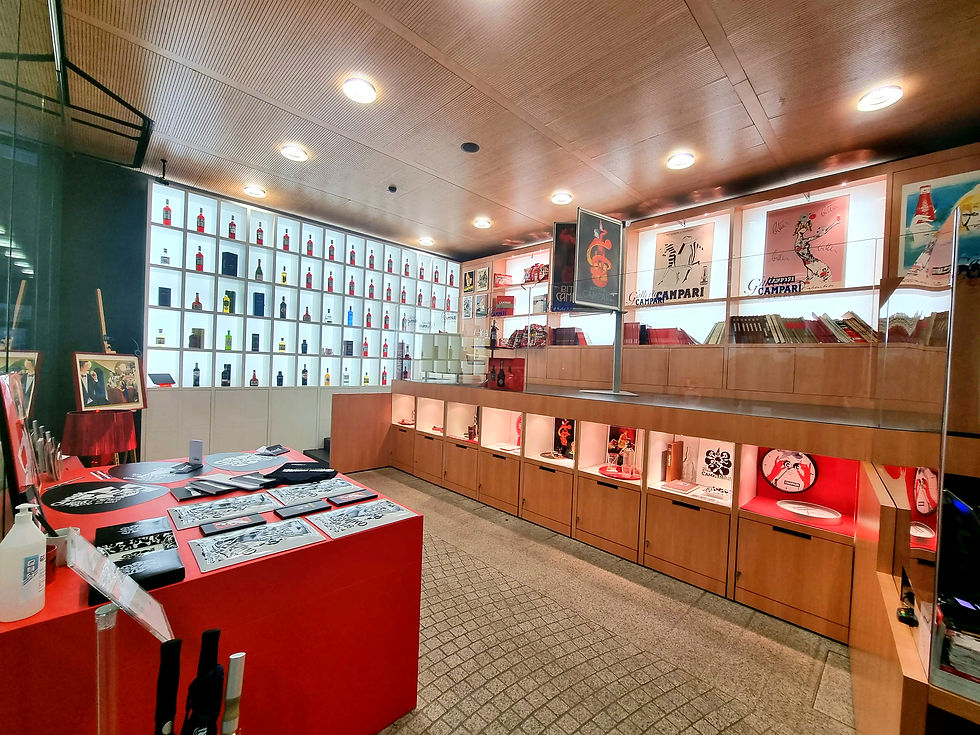



Restaurant - Villa Campari
I wish we had made time for a spot of lunch, Campari style. The brand does have an on-site restaurant, set in the old home of the Campari family, a place where you can enjoy lunch, dinner, or an aperitif in what I bet is a unique atmosphere.

The restaurant opened in 2013, and if you’re planning something special, you can book one of the private rooms, such as the Red Passion Room or the Depero Room. You can even reserve the whole villa for a wedding or event. That would be truly memorable.

Visiting the Camparino Bar: What to Expect
The Camparino Bar
Having been thoroughly immersed in all things Campari at the Galleria, we decided that there was no better place to enjoy an aperitivo than at the brand's Camparino bar.
Just after the Galleria Vittorio Emanuele II arcade was completed, Gaspare Campari opened his Caffè Campari right on the corner by Piazza Duomo. That same year, on 14 November, his son Davide was born, the first person ever born inside the Galleria. Quite the claim to fame.

The Camparino bar was opened in 1915 by Davide, reopened in 2012, and refurbished again in 2019, yet it retains its old-school style. With its rich heritage and Art Nouveau interiors, it’s an Instagrammer’s dream. The colourful wall mural, designed by the painter Angelo d’Andrea, is a masterpiece of the classic Liberty style. The bar is regularly ranked among the best bars in the world.
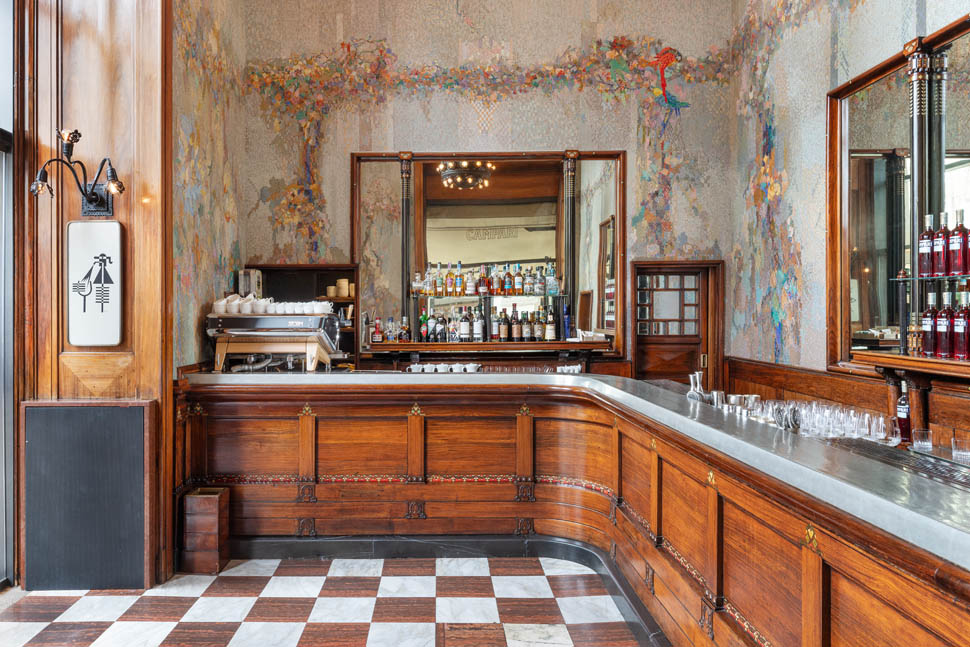
Recently, another two Campari bars; Spiritello and the underground Gasapare, have been added in a more contemporary style. And, as of 2024, you can even enjoy a gourmet lunch here.

We plumped for seats on the terrace so we could people-watch.

Surrounded by tourists who flock to the luxurious boutiques and to see the stunning architecture of the arcade, the gorgeous vintage bar was packed when we visited. It is quite the institution, one of the first bars to have a system that delivered a constant supply of chilled soda water directly from its cellars, ensuring perfectly chilled Campari and soda for every customer.

Around 1,300 people visit the Camparino Bar every day, 80% of whom are Italian. We enjoyed excellent table service as we sipped on an obligatory Negroni or two, nibbling delicious morsels such as savoury bakes, the perfect pairing for our cocktails. After soaking in the bold colours and rich history at Galleria Campari and sipping cocktails at the legendary Camparino, we finally made our way back to our hotel, completely wrapped in the Campari world, head to toe in Red Passion.
Conclusion
Galleria Campari is more than a brand showcase. It is a journey through Italian creativity, design and cocktail heritage. Whether you are into visual culture, brand storytelling or just love a good Negroni, this is an often overlooked Milan gem worth discovering.
Art, graphic design lovers and students will have a field day. It's packed with inspiration. If art is not your thing, then you might lose interest quicker than I did.
There's plenty of scope for reminiscence work and a healthy dose of nostalgia thrown in. Even if you don't like the drink, you can appreciate the contribution the brand has had on the city and on drinks marketing over the years. Having the audio guide in more languages would help engage more international guests. Adding a bar on site for a tasting would have enhanced the experience for us, but we knew we could head to the cocktail bar in town. The guided tour, still only delivered in Italian, was busy but appeared to delve into each artwork in immense detail, which lost some of the interest of the group as we witnessed. We much preferred choosing our own pace and route on the self-guided option with our English texts.
The rotating temporary exhibitions keep the space fresh and ensure that even repeat visitors can find something new. The museum is not enormous, so it doesn't overwhelm, and is expertly curated, visually vibrant, and tells a unique story about one of Italy’s most iconic brands.
Team it with a trip to the restaurant, or the historic Camparino Bar, and you will feel immersed in Red Passion, which is, after all, what the brand wants most. I cannot have a Negroni without thinking of my trip!
How long was the visit?
We were at the gallery for 90 minutes and spent a leisurely hour or so in the bar, people watching.
How much are tickets?
We paid for our tickets, and this was not part of any advertising.
Tickets for Galleria Campari are from €12 and must be booked in advance.
Opening times
Galleria Campari is now only open at weekends, and not every weekend at that, so check with them before you plan a visit. Saturday and Sunday 10.30 am - 6 pm, last entrance at 4.45 pm.
Getting here:
From the railway station of Sesto San Giovanni: exit the station and take Viale Gramsci.
From Milan Central Station: Take the underground, line 2 (green) towards Cologno Nord/Gessate, alight at Loreto, then take the line 1 (red) towards Sesto I Maggio F.S. and alight at Sesto Rondò or Sesto I Maggio F.S.
By underground: Line 1 (red) – towards Sesto I Maggio F.S. Alight at Sesto Rondò. Exit towards Piazza IV Novembre and walk along Viale Gramsci for about 600 metres. If alighting at Sesto I Maggio F.S., exit towards Viale Gramsci, turning left.
By car: From the east ring road (tangenziale), exit at Cologno Sud and follow the signs for Sesto San Giovanni. Once in town, follow the signs for the train station (F.S.). Once at the station, take Viale Gramsci. The Campari headquarters are on the right, after about 350–400 metres.
Address
Galleria Campari, Viale Antonio Gramsci, Sesto San Giovanni, Milan, Italy
Camparino Bar, Piazza Duomo 21, 20121 Milan, Italy.
Website: Galleria Campari and Camparino Bar
Where we stayed
Determined to soak up as much design and style, we based ourselves in Milan for 3 nights and chose to stay at the 5-star Radisson Collection Palazzo Touring Club. We amass lots of Radisson points, as we stay in one of their hotels pretty much every week, so it's always good to use those well-earned points on special stays.

The hotel only opened in 2021. The historic building used to be the headquarters of Touring Club Italiano, a non-profit association founded in 1894.

What started as a cycling club for travel enthusiasts grew into a national institution promoting tourism, geography, culture, and environmental awareness throughout Italy, and it is still going to this day. The building dates back to 1914, so it would have been a popular haunt for Davide Campari, who was living and working in the city at that time, especially with his keen eye for a marketing opportunity.

The hotel has plenty of archival material on the walls, and the staff can tell you all about its history. It was rather swish, with a library, spa and a small restaurant. The lounge areas feel more like a comfortable book shop, and there are nods to its travel roots everywhere with design cues such as luggage racks used as shelves, and walls and tables dressed with tickets, maps and globes.

I also liked seeing some of the historic membership cards, framed in the lounge.

What else is there to see close by:
We've travelled many times to Milan and there is so much to see.
The historic Duomo is breathtaking and should not be missed.
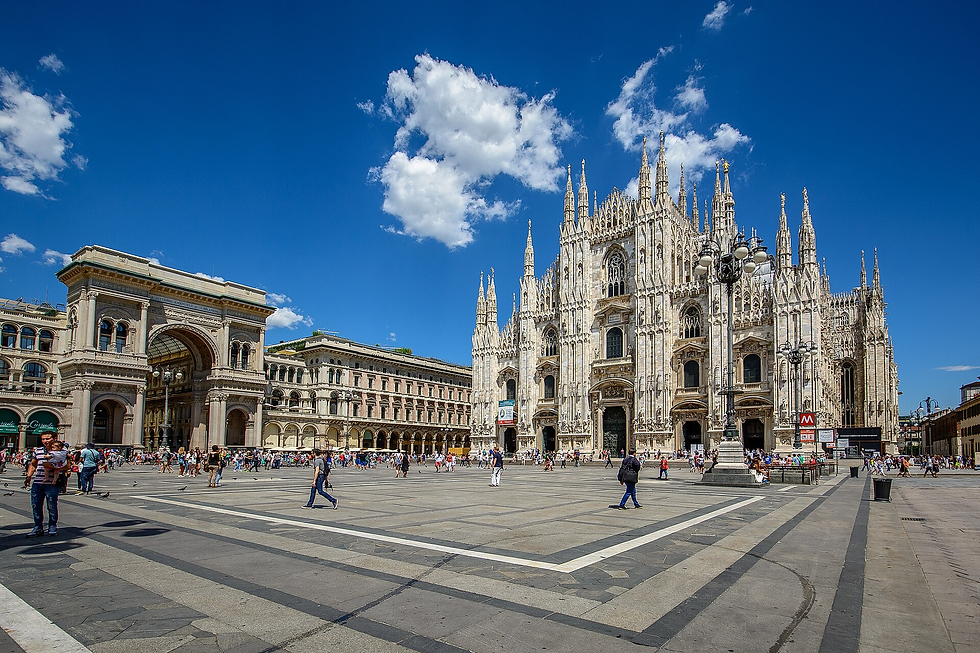
Be sure to take a trip up to the rooftop terraces that run along the entire perimeter of the monument. That way, you get great views and a chance to get close up to the architectural details you would miss from ground level. You will be here for hours, so don't rush it and soak up the atmosphere and craftsmanship.
The hoards queue up for Leonardo da Vinci’s Last Supper, and it is worth it, but a hidden gem we used to enjoy was Leonardo’s Vineyard, or La Vigna di Leonardo.

Tucked away within the lush gardens of the Casa degli Atellani, an elegant Renaissance residence, Leonardo's Vineyard used to be open for visitors until it was bought by French billionaire Bernard Arnault, CEO of LVMH, in 2023. I have my fingers crossed that it will open again, as it was a little oasis in the city, and you could get a real sense of the artist living here. Leonardo was gifted the small vineyard by his sponsor, which he tended to while he painted The Last Supper.
If you want to learn even more about Leonardo da Vinci, then head to the wonderful Museo Nazionale Scienza e Tecnologia Leonardo da Vinci.

The museum is housed in the San Vittore al Corpo monastery, initially founded in the early Middle Ages. You can wander the cloisters before you head inside to visit the largest science and technology museum in Italy.
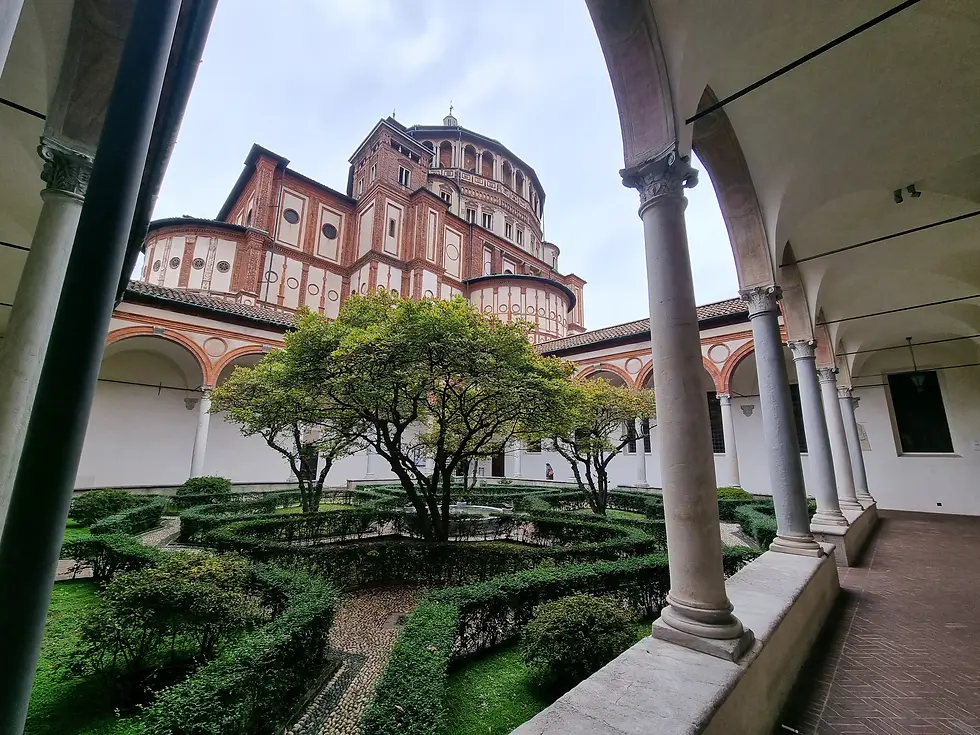
The Leonardo collection includes hundreds of mechanical models inspired by the inventor’s drawings.
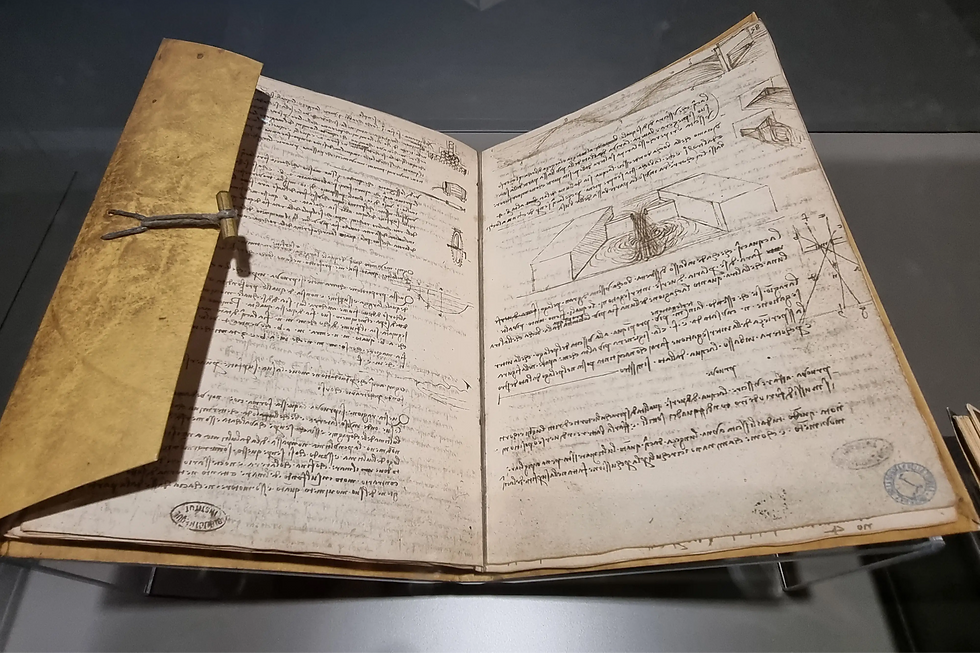

And if Leonardo isn't your thing, then the museum has exhibits on astronomy, space travel, transportation, and physics. Nerds like me will appreciate the trams and train exhibits. They even have a submarine!
If you love your cars, then a trip to the Alfa Romeo Museum is well worth the time it takes to navigate the public transport system to get there (it wasn't that easy!).

Tucked away in Arese, just outside Milan, La Macchina del Tempo (The Time Machine) is not just for car lovers; it's for anyone who enjoys stories told through design, speed, and style. The museum covers over 100 years of Alfa’s history, from its very first car to race legends and jaw-dropping concept designs. A guide to this is coming soon, so watch this space.
And if coffee is more your thing, then make sure to stop by Starbucks Reserve Roastery Milan, one of only 6 in the world.

I've been lucky enough to do all but one (Shanghai, I'm coming for you!), and this one in Milan is one of my favourites. Design, coffee, cocktails and people watching...what's not to like? A guide to this is also coming soon.
Further reading
Drink fans, if you liked this article, then check out our guide to Jack Daniel's, The Black Sheep Brewery, Empirical, Johnnie Walker Princes Street, Evan Williams, Teeling, Buffalo Trace, Coppercraft, Llanerch Vineyard, and White Castle Vineyard. More drink-related visitor guides coming soon.
Photographs: ©Julie White unless noted otherwise
Disclaimer - The views and opinions expressed are solely my own. I paid for the tours in full, and any comments reflect my personal experiences on that day. Please drink responsibly. Please visit and garner your own thoughts, and feel free to research the brand and the visitor centre in question.










Comments